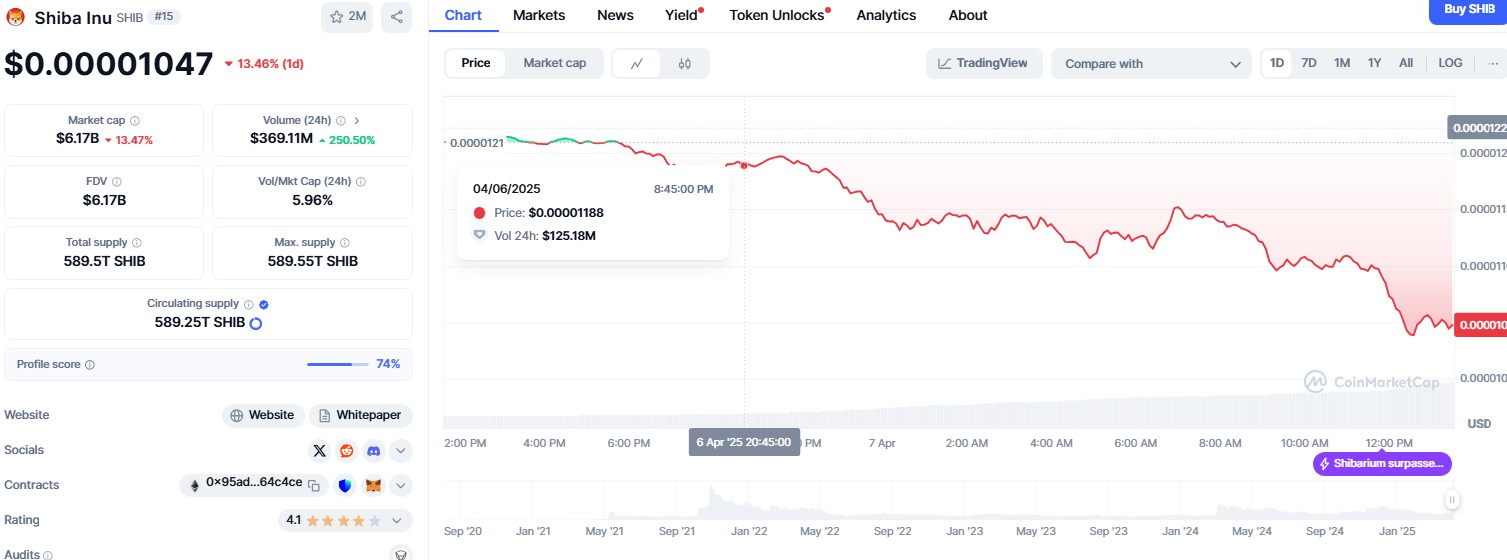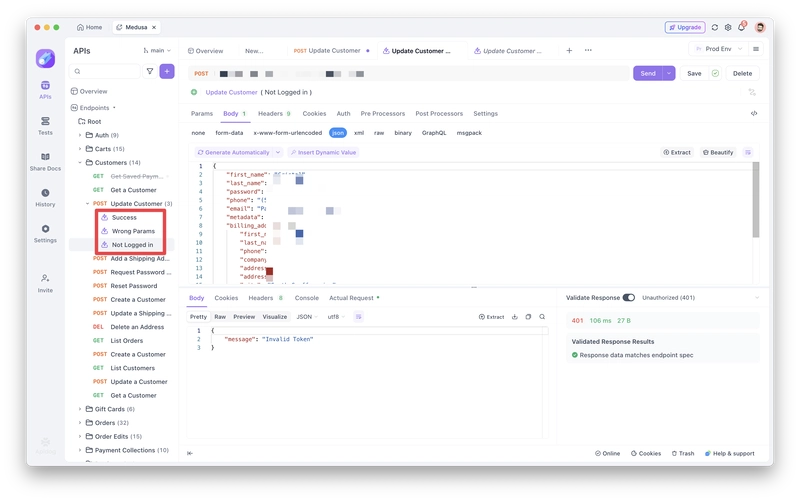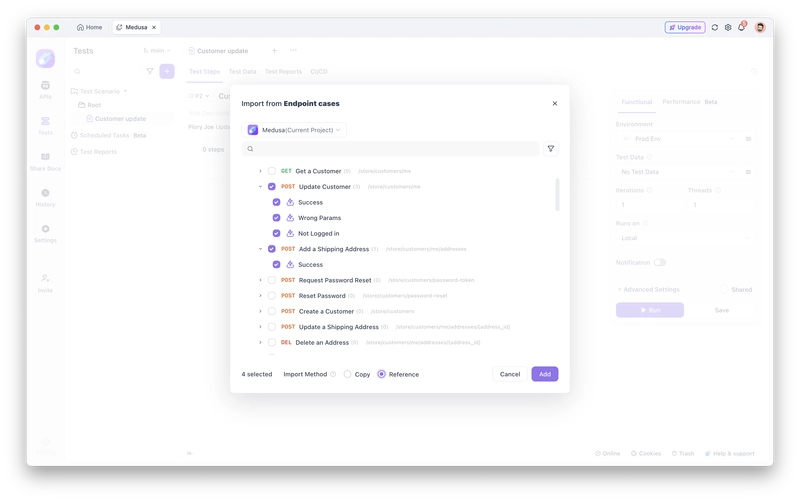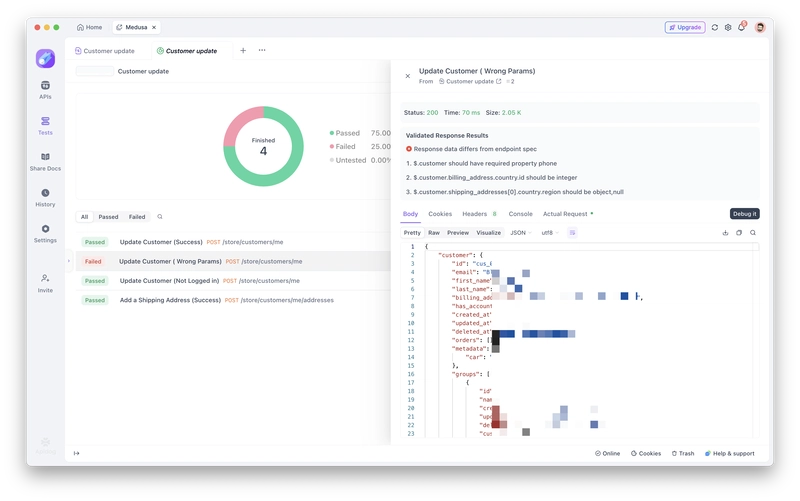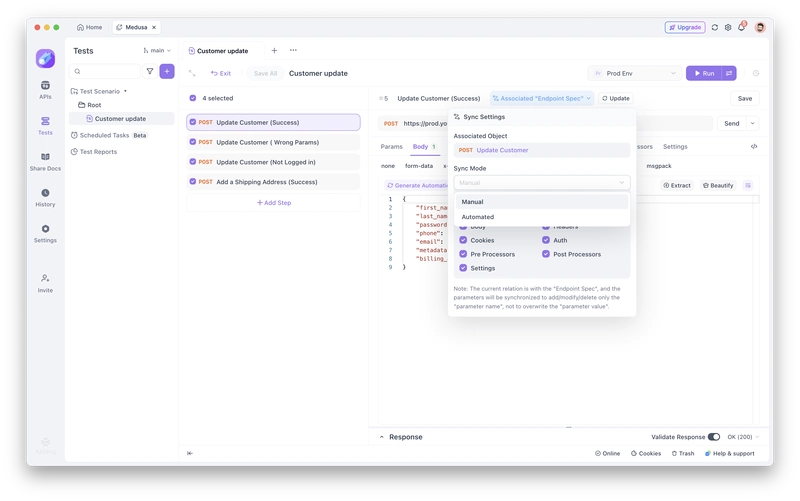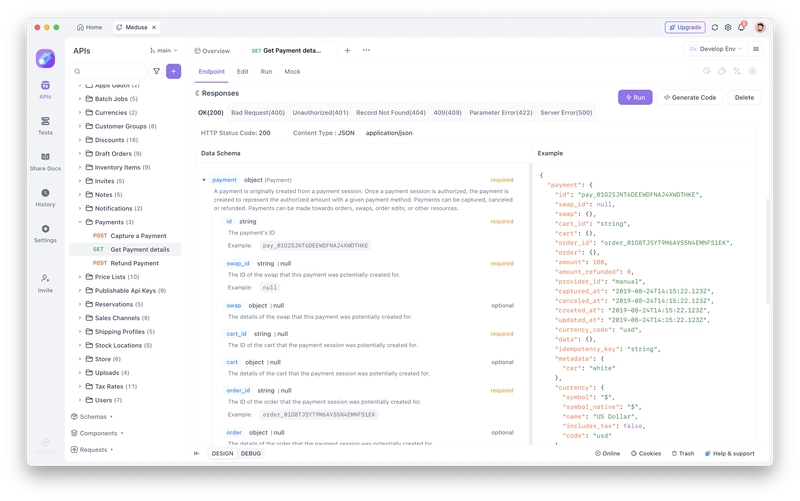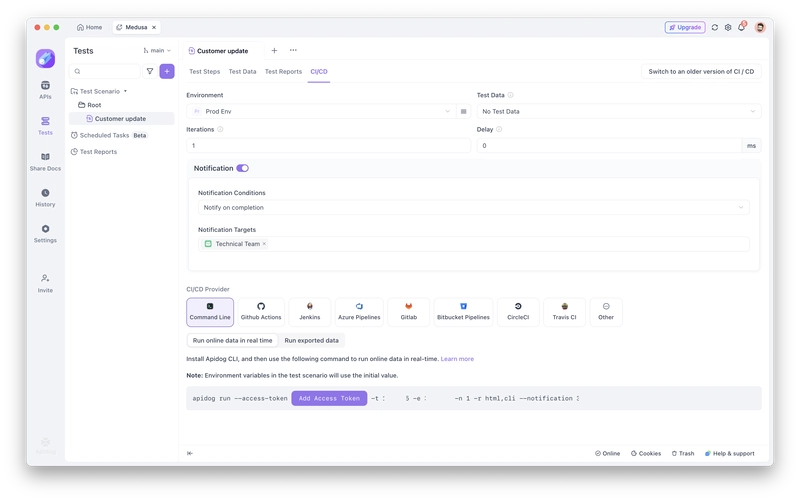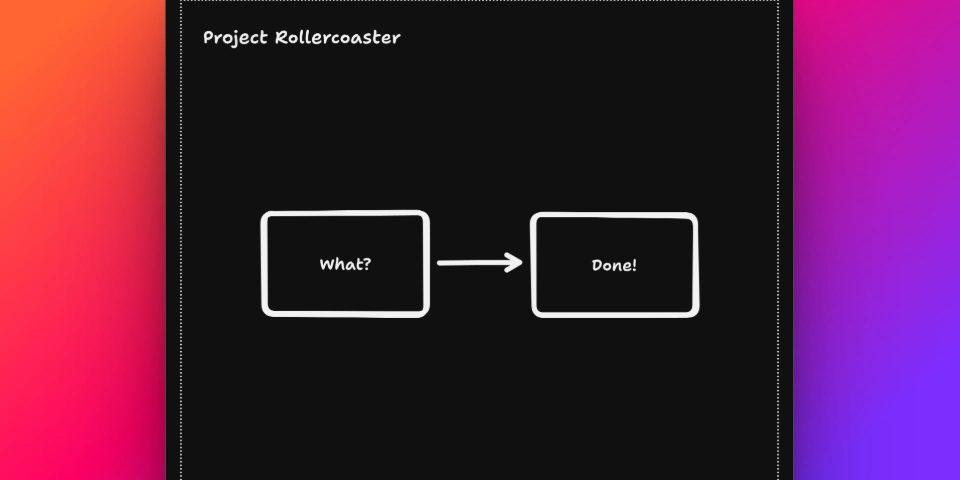Say Goodbye to API Testing Headaches: How Apidog Transformed My Development Workflow
The API Testing Nightmare We've All Experienced Last month, I was drowning in a sea of API endpoints. Our team had just completed a major backend overhaul, resulting in over 50 new endpoints that needed thorough testing before release. The thought of manually writing test scripts, maintaining documentation, and ensuring everything stayed in sync made me want to crawl under my desk. Sound familiar? If you're a developer, especially one working on backend systems, you've probably experienced this pain point. The constant cycle of: Update API endpoint Manually debug/test in Postman/cURL Update documentation (if you remember) Repeat until burnout This workflow isn't just inefficient—it's soul-crushing. That's when I discovered Apidog, a tool that has completely revolutionized how I approach API development and testing. Let me share why it might be the solution you didn't know you desperately needed. What Makes Apidog Different? Apidog isn't just another API testing tool—it's an integrated platform that combines documentation, debugging, and automated testing in one cohesive ecosystem. Here's what makes it stand out: One-Click OpenAPI Import The first game-changer for me was Apidog's ability to instantly import OpenAPI definitions and generate beautiful, structured API documentation. This means: Your API docs are automatically generated from your code Documentation stays in sync with your codebase through scheduled imports The resulting documentation is clean, well-structured, and shareable with your team No more manually updating Swagger docs or explaining to teammates or collaborators why the documentation doesn't match the actual API behavior! Seamless API Debugging with Validation Debugging APIs in Apidog feels like a breath of fresh air compared to other tools I've used, the platform automatically validates responses against your API definitions, immediately highlighting any discrepancies. This has saved me countless hours of debugging weird edge cases and format issues. But here's where it gets really powerful: every API call you make can be saved as a test case for future use. These aren't just saved requests—they're fully reusable test cases that can be incorporated into your automated testing suite. Automated Testing Without Writing a Single Line of Code This is where Apidog truly shines. The platform allows you to: Create an automated test suite by importing saved test cases with one click Run suite and visualize test results with detailed reports Keep tests in sync with your API changes automatically The best part? You don't need to write any test code. The platform handles all the heavy lifting, allowing you to focus on building features rather than maintaining test scripts. Real-World Impact: A Case Study To demonstrate how transformative Apidog can be, let me walk you through a recent project: Our team was developing a payment processing API with strict requirements for security, performance, and reliability. The traditional approach would have involved: Manually documenting 30+ endpoints Writing custom test scripts for each endpoint Creating separate performance tests Maintaining all of the above as the API evolved Instead, with Apidog: We imported our OpenAPI definition, instantly generating documentation Shared interactive documentation with the frontend team(Besides documentation, Apidog even provides them with intelligent Mock services! And no configuration is required) Created test cases while debugging the API (two birds, one stone) Set up automated test suites that ran with every code push The result? We reduced our testing and documentation overhead by approximately 60%, allowing us to ship the API two weeks ahead of schedule. Beyond Testing: The Future of API Development Tools like Apidog represent a shift in how we approach API development—moving away from siloed tools toward integrated platforms that handle the entire API lifecycle. As APIs continue to be the backbone of modern software development, I believe we'll see more emphasis on tools that streamline the process of designing, testing, and documenting APIs. The days of cobbling together multiple tools and manually keeping everything in sync are numbered. If you're still manually testing APIs, writing custom test scripts, and struggling to keep documentation updated, I strongly encourage you to give Apidog a try. It's not just about saving time—it's about bringing joy back to API development by eliminating the tedious parts of the process.The platform offers both free and premium tiers, with the free tier being surprisingly generous for individual developers or small teams. If you found this article helpful, don't forget to share this article and Apidog with that colleague who's still testing APIs with cURL commands in a text file!
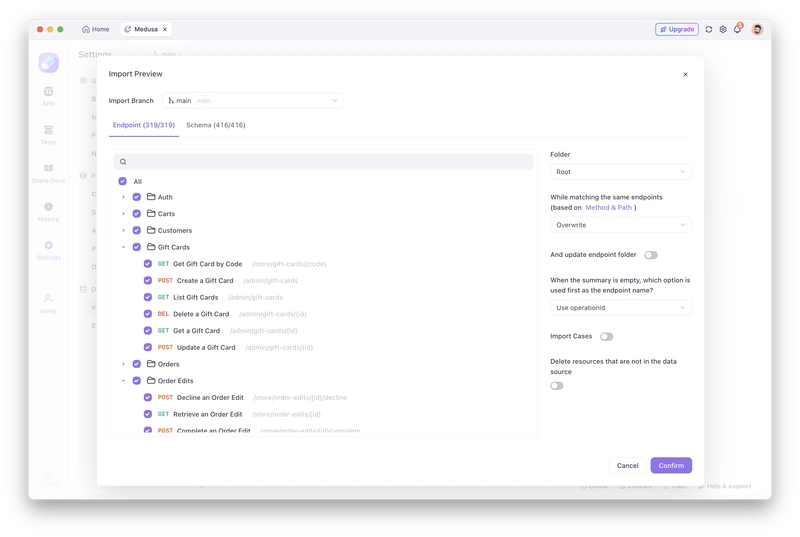
The API Testing Nightmare We've All Experienced
Last month, I was drowning in a sea of API endpoints. Our team had just completed a major backend overhaul, resulting in over 50 new endpoints that needed thorough testing before release. The thought of manually writing test scripts, maintaining documentation, and ensuring everything stayed in sync made me want to crawl under my desk.
Sound familiar? If you're a developer, especially one working on backend systems, you've probably experienced this pain point. The constant cycle of:
- Update API endpoint
- Manually debug/test in Postman/cURL
- Update documentation (if you remember)
- Repeat until burnout
This workflow isn't just inefficient—it's soul-crushing.
That's when I discovered Apidog, a tool that has completely revolutionized how I approach API development and testing. Let me share why it might be the solution you didn't know you desperately needed.
What Makes Apidog Different?
Apidog isn't just another API testing tool—it's an integrated platform that combines documentation, debugging, and automated testing in one cohesive ecosystem. Here's what makes it stand out:
One-Click OpenAPI Import
The first game-changer for me was Apidog's ability to instantly import OpenAPI definitions and generate beautiful, structured API documentation.

This means:
- Your API docs are automatically generated from your code
- Documentation stays in sync with your codebase through scheduled imports
- The resulting documentation is clean, well-structured, and shareable with your team
No more manually updating Swagger docs or explaining to teammates or collaborators why the documentation doesn't match the actual API behavior!
Seamless API Debugging with Validation
Debugging APIs in Apidog feels like a breath of fresh air compared to other tools I've used, the platform automatically validates responses against your API definitions, immediately highlighting any discrepancies. This has saved me countless hours of debugging weird edge cases and format issues.
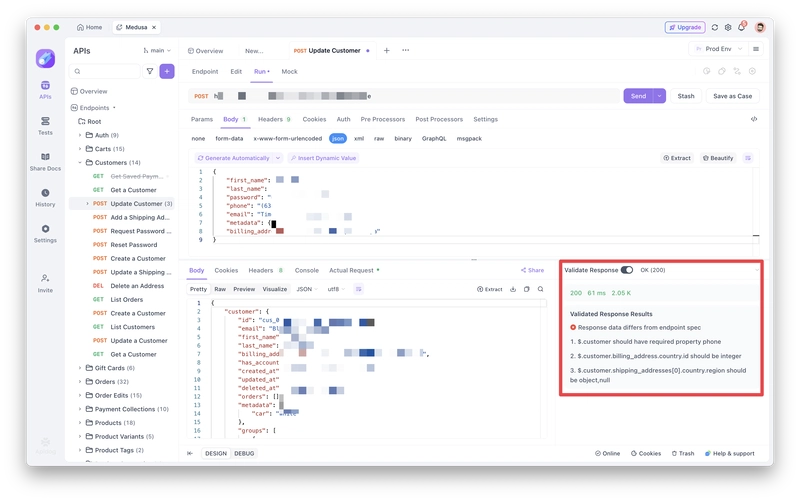
But here's where it gets really powerful: every API call you make can be saved as a test case for future use. These aren't just saved requests—they're fully reusable test cases that can be incorporated into your automated testing suite.
Automated Testing Without Writing a Single Line of Code
This is where Apidog truly shines. The platform allows you to:
- Create an automated test suite by importing saved test cases with one click
- Run suite and visualize test results with detailed reports
- Keep tests in sync with your API changes automatically
The best part? You don't need to write any test code. The platform handles all the heavy lifting, allowing you to focus on building features rather than maintaining test scripts.
Real-World Impact: A Case Study
To demonstrate how transformative Apidog can be, let me walk you through a recent project:
Our team was developing a payment processing API with strict requirements for security, performance, and reliability. The traditional approach would have involved:
- Manually documenting 30+ endpoints
- Writing custom test scripts for each endpoint
- Creating separate performance tests
- Maintaining all of the above as the API evolved
Instead, with Apidog:
- We imported our OpenAPI definition, instantly generating documentation
- Shared interactive documentation with the frontend team(Besides documentation, Apidog even provides them with intelligent Mock services! And no configuration is required)
- Created test cases while debugging the API (two birds, one stone)
- Set up automated test suites that ran with every code push
The result? We reduced our testing and documentation overhead by approximately 60%, allowing us to ship the API two weeks ahead of schedule.
Beyond Testing: The Future of API Development
Tools like Apidog represent a shift in how we approach API development—moving away from siloed tools toward integrated platforms that handle the entire API lifecycle.
As APIs continue to be the backbone of modern software development, I believe we'll see more emphasis on tools that streamline the process of designing, testing, and documenting APIs. The days of cobbling together multiple tools and manually keeping everything in sync are numbered.
If you're still manually testing APIs, writing custom test scripts, and struggling to keep documentation updated, I strongly encourage you to give Apidog a try. It's not just about saving time—it's about bringing joy back to API development by eliminating the tedious parts of the process.The platform offers both free and premium tiers, with the free tier being surprisingly generous for individual developers or small teams.
If you found this article helpful, don't forget to share this article and Apidog with that colleague who's still testing APIs with cURL commands in a text file!


















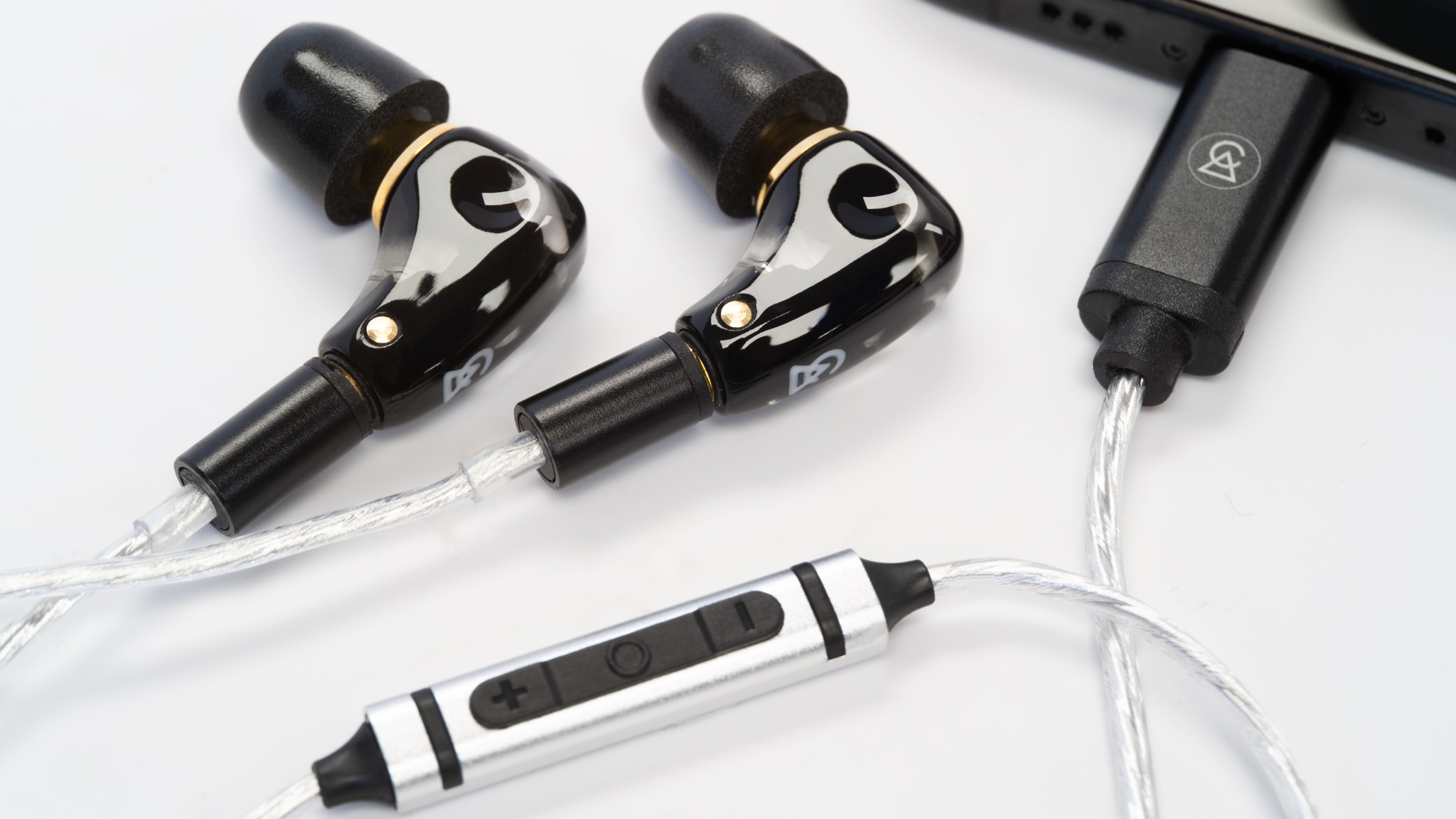






















































































































































![[The AI Show Episode 142]: ChatGPT’s New Image Generator, Studio Ghibli Craze and Backlash, Gemini 2.5, OpenAI Academy, 4o Updates, Vibe Marketing & xAI Acquires X](https://www.marketingaiinstitute.com/hubfs/ep%20142%20cover.png)






























































































































![[DEALS] The Premium Learn to Code Certification Bundle (97% off) & Other Deals Up To 98% Off – Offers End Soon!](https://www.javacodegeeks.com/wp-content/uploads/2012/12/jcg-logo.jpg)
![From drop-out to software architect with Jason Lengstorf [Podcast #167]](https://cdn.hashnode.com/res/hashnode/image/upload/v1743796461357/f3d19cd7-e6f5-4d7c-8bfc-eb974bc8da68.png?#)



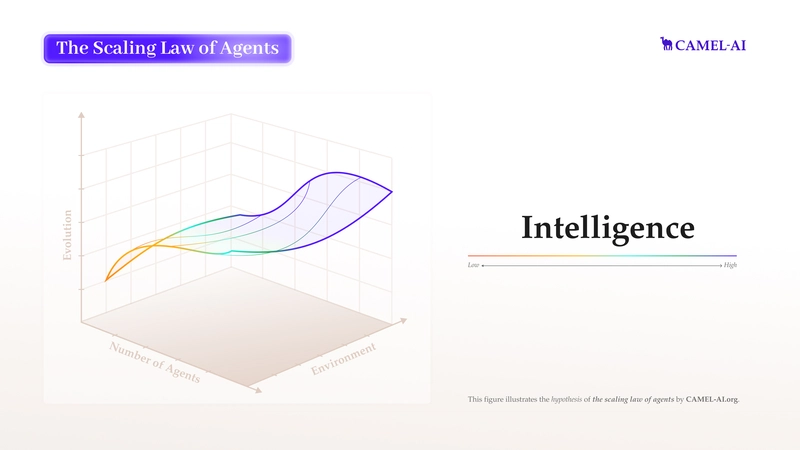




































































































.png?#)





(1).jpg?width=1920&height=1920&fit=bounds&quality=80&format=jpg&auto=webp#)





























_Christophe_Coat_Alamy.jpg?#)
.webp?#)
.webp?#)











































































































![Apple Considers Delaying Smart Home Hub Until 2026 [Gurman]](https://www.iclarified.com/images/news/96946/96946/96946-640.jpg)
![iPhone 17 Pro Won't Feature Two-Toned Back [Gurman]](https://www.iclarified.com/images/news/96944/96944/96944-640.jpg)
![Tariffs Threaten Apple's $999 iPhone Price Point in the U.S. [Gurman]](https://www.iclarified.com/images/news/96943/96943/96943-640.jpg)



















































































































